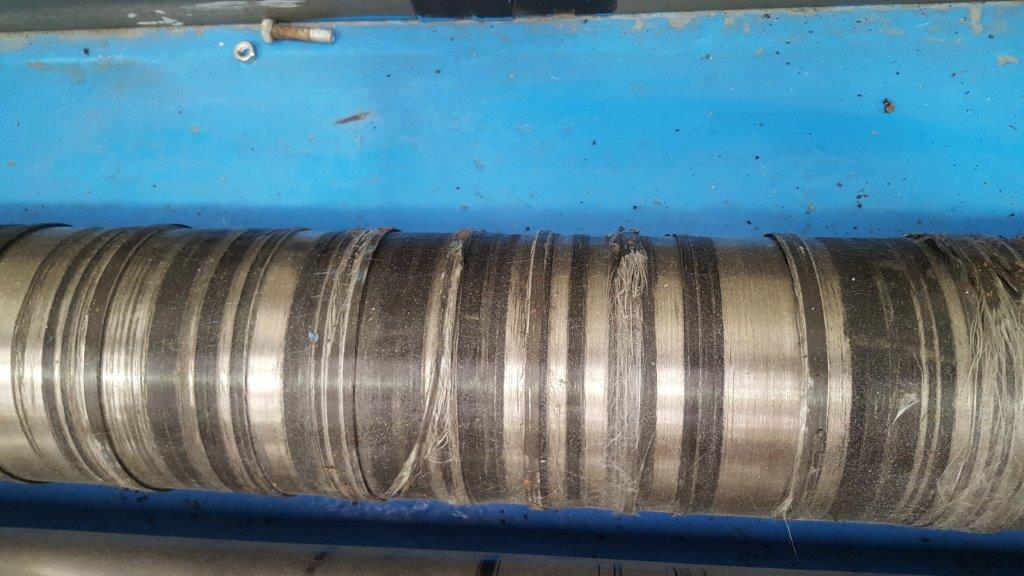Roll Cleaning Solution for Contaminated Glass Veil Manufacturing
 Process and Problem
Process and Problem
A global building and industrial materials leader located in the U.K. was challenged with roll contamination on its glass veil manufacturing line. The glass veil is manufactured using a wet-laid non-woven process where glass fibers are suspended in an aqueous solution and then deposited on to a forming fabric, where the water is removed, and the nonwoven sheet starts to form. Driving the forming fabric are several rollers where roll cleaning systems are installed to remove excess fibers and water.
Following the initial formation, the nonwoven sheet is transported onto a secondary fabric where binder impregnation takes place. After the binder is applied, the sheet travels onto a stainless-steel mesh type drying wire. The drying wire travels through a heated oven where the sheet is cured before inspection. Throughout the oven there are several return rolls that come in contact with the wire and these rollers is where the heavy contamination build-up was occurring.
The build-up on the rollers was mainly excess binder and glass fibers. The excess binder when cured is black in color and overtime black deposits would transfer onto the wire and eventually cause sheet defects. To try and prevent sheet defects, the rollers were removed on a regular basis and cleaned manually by an operator. This was time consuming and did not solve the quality issue related to sheet defects. A combination of lost production time and scrap material was costing the customer. The customer experimented with several continuous cleaning solutions, including a competitor doctor blade system but, these attempts were unsuccessful.
The failure of the competitor system was mainly due to the size of the doctor system because space was limited and anything that was removed from the rolls was re-contaminating the wire above. Furthermore, the competitor was not able to provide a hard enough doctor blade material, that could withstand the hardened binder and keep the rolls clean.
Solution
Kadant proposed the VeriLite™ doctor blade system complete with ProClean™ roll cleaning blades. The compact design of the VeriLite allowed the customer to position the doctor blade contact point in an area where the contamination could be removed without disturbing the wire above. In addition, the hardened tip on the ProClean blade was able to withstand the binder contamination and keep the rolls clean. By keeping the oven rolls clean, the number of sheet defects were reduced significantly because the excess cured binder was no longer re-contaminating the wire and creating black spots on the finished non-woven sheet. The VeriLite system and ProClean blades have now become a necessity at this plant when running certain binder types and are essential to the daily running of the manufacturing line.